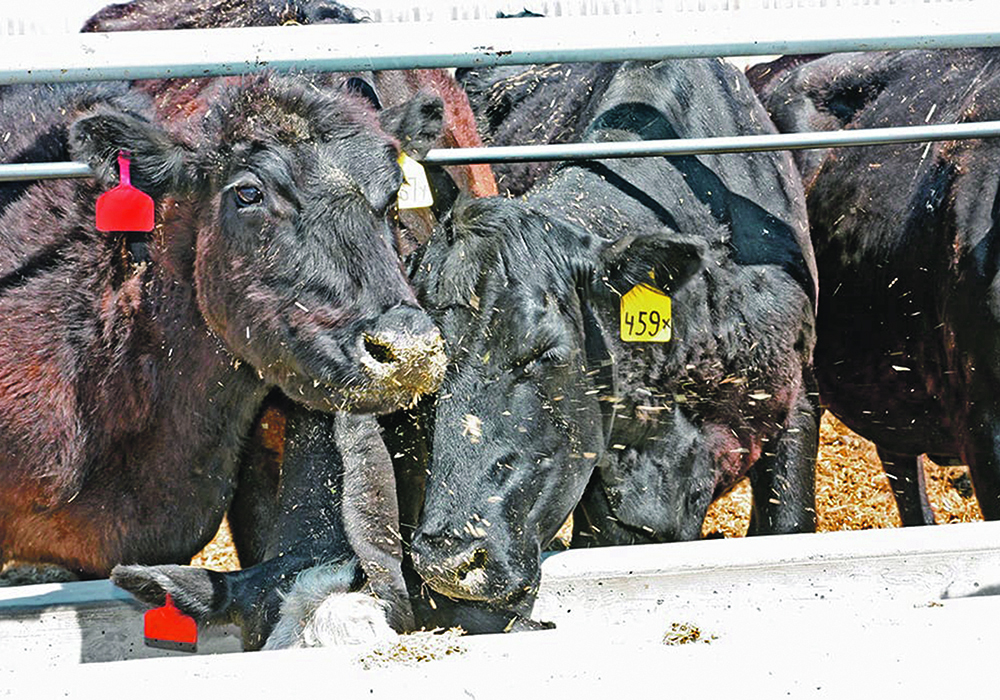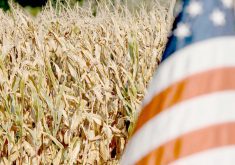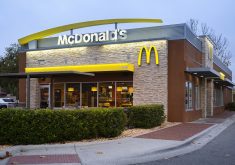Like farmers and ranchers, veterinarians love to pour concrete. Many build customized facilities dedicated to their animal health mission: examination rooms, operating theaters, cattle chutes, holding pens and loading docks.
Three Canada-based vets, however, are pouring enough concrete in far southwestern Nebraska to cover what they say will be a square mile — 640 acres — of a “beyond state-of-the-art,” 150,000-head cattle feedlot.
The concrete, as Kee Jim, Calvin Booker and Eric Behlke have explained in interviews, is the key to that “beyond” statement. With it, tons of clean, or dirt-free, cattle manure are “to be used by biodigesters to produce methane” that will offset some of the carbon footprint of the feedlot’s cattle.
Read Also

Invigor Gold variety viewed as threat to condiment mustard
Invigor Gold, the canola-quality mustard developed by BASF, is on a collision course with Canada’s condiment mustard industry. It’s difficult to see how the two can co-exist.
Maybe, but concrete is one of the dirtiest, most carbon dioxide-intensive products known to mankind, and that intensity defies any claim of “green” by any concrete-heavy construction.
That’s science, not opinion.
According to concrete engineers, on average, one ton of concrete produces 1,650 pounds of CO2, mostly because cement, concrete’s hardening agent, requires so much fossil fuel (heat) to make.
If, as feedlot experts suggest, the 640-acre Nebraska feedlot uses five-inch-thick concrete — a requirement to collect the “clean” manure for its proposed methane digesters — it will then pour an estimated 428,000 cubic yards of concrete.
By itself, 857,600 tons of concrete, with a CO2 bill of 1,650 lb. per ton, will give the feedlot a 1.4 billion lb. carbon footprint before one steer steps onto it.
More so, the feedyard holds other not-so-green elements. For example, according to published reports, a typical feedlot animal produces 11 tons of manure per year.
As the feedlot gears up, its initial 50,000 head will produce 550,000 tons of manure per year. Later, when the feedlot reaches its 150,000-head capacity, it likely will handle 1.65 million tons of manure per year.
Not all of that massive manure pile can be fed into the feedlot’s yet-to-be-built manure digesters. As such, one of its owners claims it has “contracts with local farmers to spread the manure as fertilizer.”
Fine, but as the University of Nebraska calculates, if farmers were to spread 30 tons of manure per acre, the feedlot would need upwards of 55,000 acres to hold its annual manure production before any digester is built.
And then there’s the question of water. Western Nebraska, on average, receives about 19 inches of rainfall per year, or about half the U.S. national average.
Despite that dryness, the feedlot’s owners say they’ve acquired enough water through the purchase of 13 nearby irrigation wells. Those wells, they calculate, will supply the 1,262 acre feet — or 411 million gallons — of water the enterprise requires annually.
Critics aren’t so sure, especially with the increasing impact of climate change on the region.
All these environmental concerns, however, skate right past the bigger issue in today’s cattle industry: Is a new, 150,000-head feedlot even needed when the U.S. beef herd is at a 63-year low?
Moreover, who stands to pay the price for its entrance into this low margin sector of U.S. agriculture? Smaller competing feedlot operators in the region? Local residents who soon will have 150,000 water-using, manure-making cattle as neighbours?
“Worse,” says Mike Callicrate, whose Kansas-based Callicrate Cattle Co. is less than an hour’s drive south of the new feedlot.
“Everything COVID taught us that we were doing wrong — big feedlots, big meat packers, too-long supply chains — we’re now doing again.
“(Instead), we should be doing the opposite: hundreds of small feedlots, dozens of small-sized meat packers, more vibrant communities. We should be building resilience, not monuments to the failing past.”
And especially not monuments made of concrete.
Alan Guebert is an agricultural commentator from Illinois.















